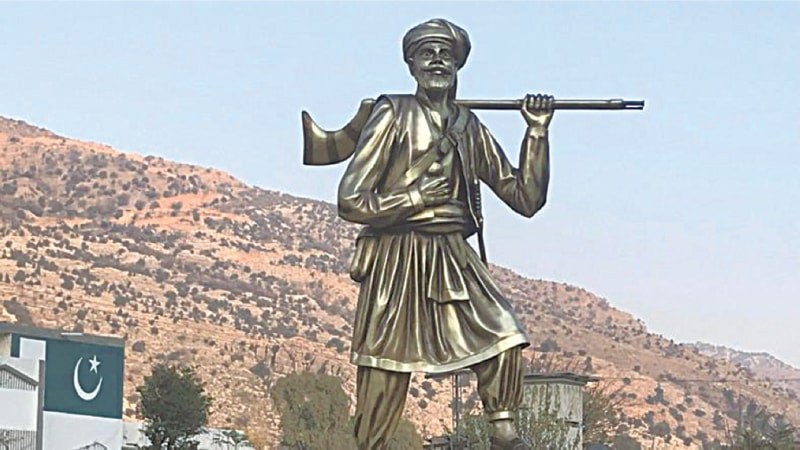
Ajab Khan Afridi was a prominent figure in the history of the Khyber Pakhtunkhwa region (formerly known as the North-West Frontier Province) of Pakistan during the early 20th century. He is best known for his role as a freedom fighter and a tribal leader who opposed British colonial rule. The staue of Ajab khan afridi is put in place as a symbol of bravery for the generation to come.
Key Facts about Ajab Khan Afridi:
1. Background: Ajab Khan Afridi belonged to the Afridi tribe, one of the Pashtun tribes residing in the mountainous areas of the Darra Adam khel. The Afridis have historically been known for their fierce resistance to foreign invasions and their autonomous tribal structure.
2. Rebellion Against the British: Ajab Khan Afridi's most notable act of defiance occurred in 1923. He became famous for leading a rebellion against the British authorities in the region. His resistance was part of the larger Pashtun resistance against British colonialism, which included numerous uprisings and skirmishes.
3. The Kidnapping Incident: One of the most famous episodes in Ajab Khan Afridi's life was the kidnapping of Molly Ellis, the daughter of a British officer, in 1923. This act was a direct challenge to British authority and aimed at negotiating the release of Afridi prisoners held by the British. The incident caused a significant stir and highlighted the tensions between the British and the local tribes.
4. Legacy: Ajab Khan Afridi is remembered as a symbol of resistance and bravery among the Pashtun people. His actions against the British colonial forces are celebrated in local folklore and have been depicted in various literary and artistic works in Pakistan.
5. Cultural Impact: The story of Ajab Khan Afridi has been passed down through generations, contributing to the cultural and historical narrative of resistance against colonial rule in Pakistan. His legacy continues to inspire many in the region who value independence and resistance against oppression.
Ajab Khan Afridi's life and actions are emblematic of the broader struggle for independence in South Asia, reflecting the complex dynamics of colonial resistance and the enduring spirit of the tribal societies in the region.

